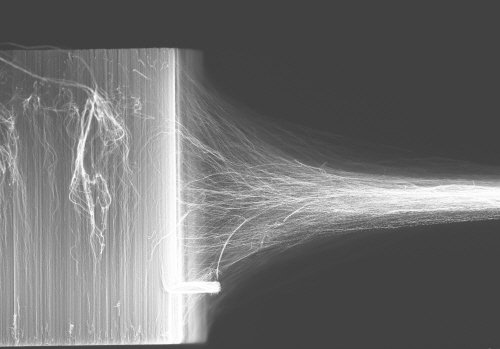
A new type of artificial muscle made from carbon nanotubes has been developed by researchers in the US. The muscles flex when electrically charged and can expand to 220% of their original length in a matter of milliseconds. The devices could find use in medical and aerospace applications, and perhaps even in robots of the future.
Carbon nanotubes (CNTs) are tiny tubes with radii of just a few nanometres and walls as thin as a single carbon atom. Ray Baughman and colleagues the University of Texas at Dallas created their artificial muscle by starting with a “forest” of CNTs, which all are aligned in the same direction. CNTs at the edge of the forest are pulled away in a direction perpendicular to the CNT alignment (see figure). This creates an aerogel-like material with a density of just 1.5 mg/cm3, which is not much heavier than air (Science 323 1575).
The aligned nanotubes can be transformed into carbon nanotube aerogel sheets at rates of up to 2 m/s. The sheets can be as much as 1 m in length.
‘Unprecedented degree of anisotropy’
The finished material expands like a stretched sheet of rubber when electrically charged, while remaining extremely stiff and resistant to bending. “This apparently unprecedented degree of anisotropy is akin to having diamond-like behaviour in one direction and rubber-like behaviour in the others,” says John Madden of the University of British Columbia, who was not involved in the work.
The devices operate over a range of temperatures — 80–1900 K — that previous artificial muscles could only dream of, and can expand and contract at rates that are around 1000 times higher than those for natural muscle. They also generate a force that is 30 times bigger than that exerted by natural muscle.
Together these properties mean that the muscles might be used as actuators in medical and other devices, as well as in electrodes for solar cells, light-emitting diodes and displays. They might also find their way into future robot arms and legs.
Their ability to function over extreme temperature ranges may also make them attractive for aerospace and space applications, say the researchers.



